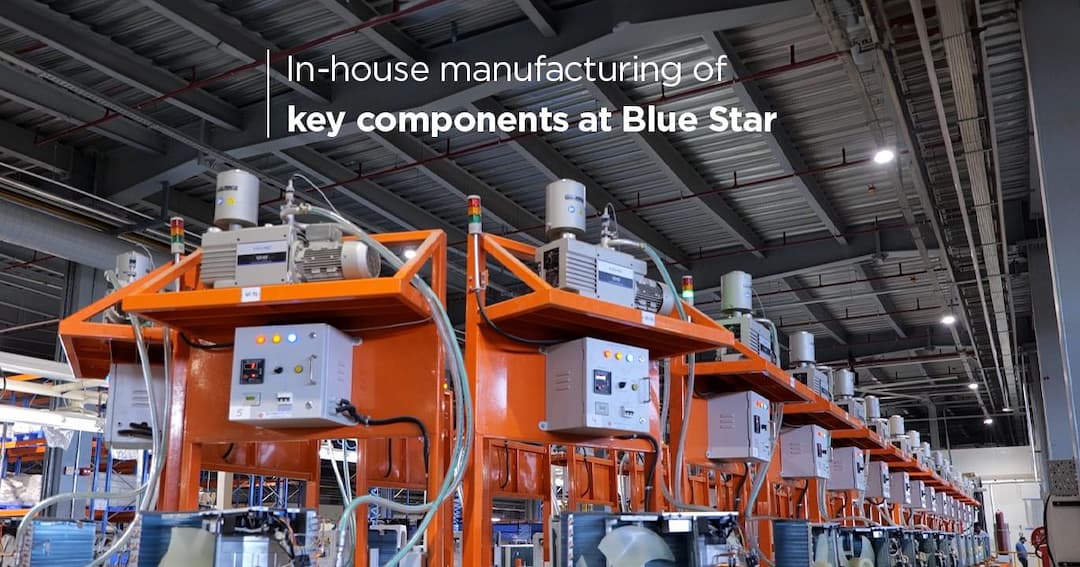Heat Pump market trends in 2024

As we move into the second half of 2024, the heat pump market is evolving rapidly, driven by global decarbonisation efforts and the rising demand for sustainable energy solutions. This blog will explore key trends in the industry, highlighting both opportunities and challenges, particularly in Europe. With government incentives, technological advancements, and strategic planning, the market is poised for significant growth, despite facing issues like market overstocking and consumer hesitation. This comprehensive analysis will guide industry stakeholders in navigating the landscape and maximising the potential of heat pumps in a sustainable future.
Introduction
The heat pump market is set for a significant evolution in 2024, fuelled by the global push toward decarbonisation and the increasing demand for sustainable energy solutions. As governments and businesses strive to reduce carbon footprints and meet ambitious climate goals, heat pumps are emerging as a critical technology for efficient heating and cooling. This blog delves into the trends shaping the industry, exploring the benefits of heat pumps, the challenges in the European market, and the strategies needed to overcome obstacles and capitalise on growth opportunities.
The Growing Demand for Heat Pumps
As climate concerns escalate, there’s a growing emphasis on reducing carbon emissions and transitioning to renewable energy sources. Heat pumps have gained prominence as they align perfectly with these goals by offering an energy-efficient alternative to traditional heating and cooling systems. Unlike conventional boilers and furnaces that rely on burning fossil fuels, heat pumps utilise ambient air, ground, or water to provide heating and cooling, making them a cleaner and more sustainable option.
In 2024, we expect the demand for heat pumps to rise significantly as more homeowners and businesses recognise their long-term benefits. Heat pumps are environmentally friendly and cost-effective, offering significant savings on energy bills over time. This dual advantage of reducing carbon footprints while saving money is likely to drive widespread adoption.
The European Market: Challenges and Opportunities
Europe has been a leader in the adoption of heat pumps, driven by stringent environmental regulations and government incentives to reduce dependence on fossil fuels. However, Europe’s air-to-water heat pump segment has recently faced some challenges. Sales figures have shown a decline, partly due to overstocking issues, which have led to price drops and consumer hesitation. Additionally, the high upfront costs associated with heat pump installation have deterred some potential buyers.
Despite these challenges, the European market remains ripe with opportunities. The EU’s ambitious 2030 decarbonisation goals, combined with the phase-out of F-gases, are expected to drive innovation in the sector. Manufacturers are likely to respond by developing more efficient and cost-effective models that cater to the diverse needs of the European market. Moreover, increased consumer awareness of the long-term benefits of heat pumps could help shift public perception and stimulate demand.
Pathways for Market Improvement
There are several strategies to overcome the challenges facing the heat pump market:
Enhanced Consumer Awareness: It is crucial to educate consumers about the long-term benefits of heat pumps, including energy efficiency and cost savings. Many consumers are still unfamiliar with how heat pumps work and their advantages over traditional heating systems. Public awareness campaigns and informative content can help bridge this knowledge gap and encourage more people to consider heat pumps as a viable option.
Government Incentives: Governments can play a significant role in driving the adoption of heat pumps by offering financial incentives such as grants, tax rebates, and subsidies. These incentives can help reduce the financial burden of the initial installation costs, making heat pumps more accessible to a broader audience. As seen in other markets, such incentives can lead to a surge in demand and support the growth of the industry.
Promotion of Hybrid Systems: Hybrid systems that combine conventional heating technologies with modern heat pumps can appeal to consumers who are hesitant to make a complete switch. These systems offer the best of both worlds, providing the reliability of traditional heating methods with the energy efficiency of heat pumps. By offering hybrid solutions, manufacturers can attract a wider range of customers and ease the transition to sustainable heating technologies.
Technological Advancements: The continuous evolution of heat pump technology is critical for meeting the growing demand. Innovations such as improved compressors, advanced refrigerants, and smarter control systems can enhance heat pump efficiency and performance. As technology improves, heat pumps are likely to become more reliable, efficient, and easier to install, further driving their adoption.
The Importance of Achieving Decarbonisation Goals
Decarbonisation is not just an environmental imperative, but a strategic economic goal for many countries. The transition to renewable energy sources and technologies like heat pumps is essential for meeting international climate targets, such as those outlined in the Paris Agreement. By reducing reliance on fossil fuels and minimising greenhouse gas emissions, heat pumps contribute to a cleaner, more sustainable future.
To achieve these decarbonisation goals, collaboration among various stakeholders is essential. Governments, environmental organisations, and the private sector must work together to promote the adoption of heat pumps and other sustainable technologies. This collaboration can take the form of public-private partnerships, industry alliances, and joint efforts to develop and implement effective policies and incentives.
The Role of Manufacturers and Installers Manufacturers and installers play a crucial role in the success of the heat pump market. For manufacturers, the focus should be on developing products that meet the evolving needs of consumers while adhering to environmental standards. This includes investing in research and development to create more efficient and cost-effective models and offering customisation options to cater to different climates and building types.
On the other hand, Installers must ensure that heat pumps are commissioned and installed correctly to deliver the expected performance and efficiency. Proper installation maximises heat pump performance and longevity and ensures customer satisfaction. Training and certification programs for installers can help maintain high standards and build consumer confidence in the technology.
Conclusion
The heat pump market is at a pivotal moment in 2024. As the world moves towards decarbonisation and sustainable energy solutions, heat pumps are emerging as a vital technology for the future. While challenges remain, particularly in the European market, the potential for growth is substantial. By focusing on consumer education, government incentives, technological advancements, and strategic industry planning, the heat pump market can overcome its current obstacles and thrive in the years to come. For businesses and homeowners alike, embracing heat pumps means investing in a cleaner, more efficient, and sustainable future.















